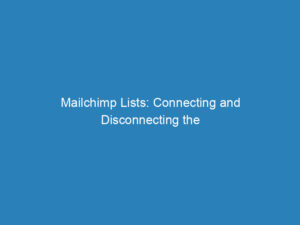
Understanding WordPress: Key Programming Languages Used
WordPress has established itself as a powerful platform for creating a variety of websites, from personal blogs to robust eCommerce stores. Central to its functionality is a combination of programming languages that work seamlessly behind the scenes to deliver a smooth user experience. This article delves into the programming languages that power WordPress, helping you understand the framework that makes it such a versatile tool.
Core Programming Language of WordPress
The backbone of WordPress is PHP (Hypertext Preprocessor), a widely-used scripting language. PHP is essential for building dynamic web pages and interacts with a MySQL database to manage and retrieve content. Essentially, PHP pulls information from the database and displays it on your website, creating a dynamic user experience.
Programming Languages Utilized by WordPress
Developers will be pleased to know that WordPress employs several programming languages that are fundamental to web development. Here’s a closer look at each one:
- HTML: HyperText Markup Language is the standard markup language used for creating web pages. Although it has been around for decades, it continues to evolve, with HTML5 being the latest version. HTML structures the content on the web pages, acting as the skeleton of a site.
- CSS: Cascading Style Sheets are used to style HTML content. CSS allows developers to define the look and feel of a website, including aspects like color, layout, and fonts. By applying various rules, CSS transforms plain HTML into an aesthetically pleasing interface.
- PHP: As the primary programming language for WordPress, PHP runs on the server-side, managing how content is dynamically served to users. It enables conditional statements and interacts with HTML to display relevant information on the page.
- JavaScript: This client-side scripting language enhances the interactivity of web pages. While not essential for basic WordPress functionality, JavaScript is crucial for adding dynamic features, like animations and user-triggered events, that improve user engagement.
What Each Language Brings to the Table
Each of these programming languages plays a unique role in crafting a WordPress site:
HTML
HTML serves as the foundation, creating the structure of web pages. Every element on the page is defined through HTML, which is then enhanced by CSS and JavaScript.
CSS
CSS is responsible for the design and visual style of the website. It controls how elements appear, allowing developers to create visually appealing layouts that enhance the user experience.
PHP
PHP is the engine behind the scenes, managing data retrieval and interactions with the database. Understanding PHP is critical for anyone looking to develop or customize WordPress sites effectively.
JavaScript
JavaScript adds a layer of interactivity, enabling features like image hover effects and dynamic content updates. While it’s not mandatory for all WordPress sites, its use can significantly elevate user engagement.
No Coding Skills Required
One of the great advantages of WordPress is that you don’t need to be a coding expert to create a professional-looking website. The platform offers a user-friendly content management system (CMS) that allows users to build and customize sites using themes and plugins. This means that even those with little to no coding experience can create visually appealing and functional websites quickly and efficiently.
WordPress continues to be a go-to choice for individuals and businesses alike, thanks to its flexibility and user-friendly design. Whether you are a seasoned developer or a complete beginner, WordPress provides the tools needed to create stunning websites with ease.
